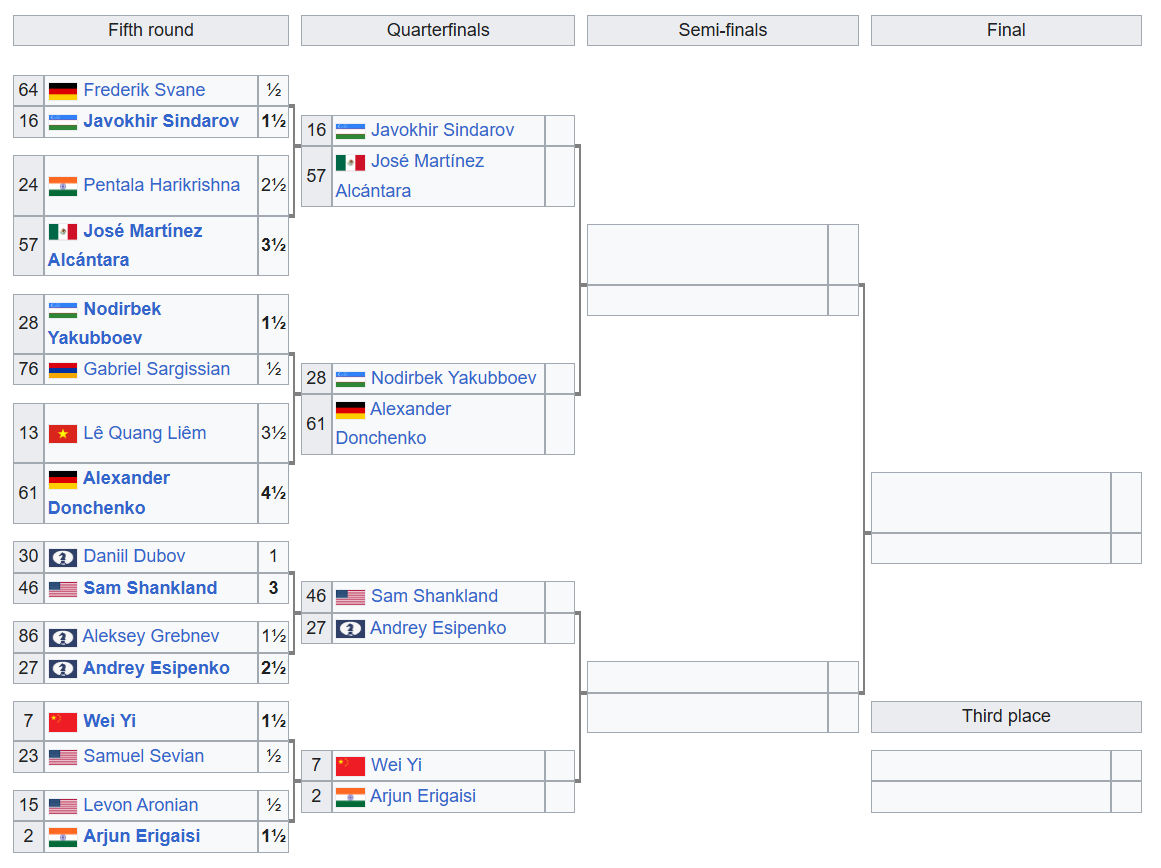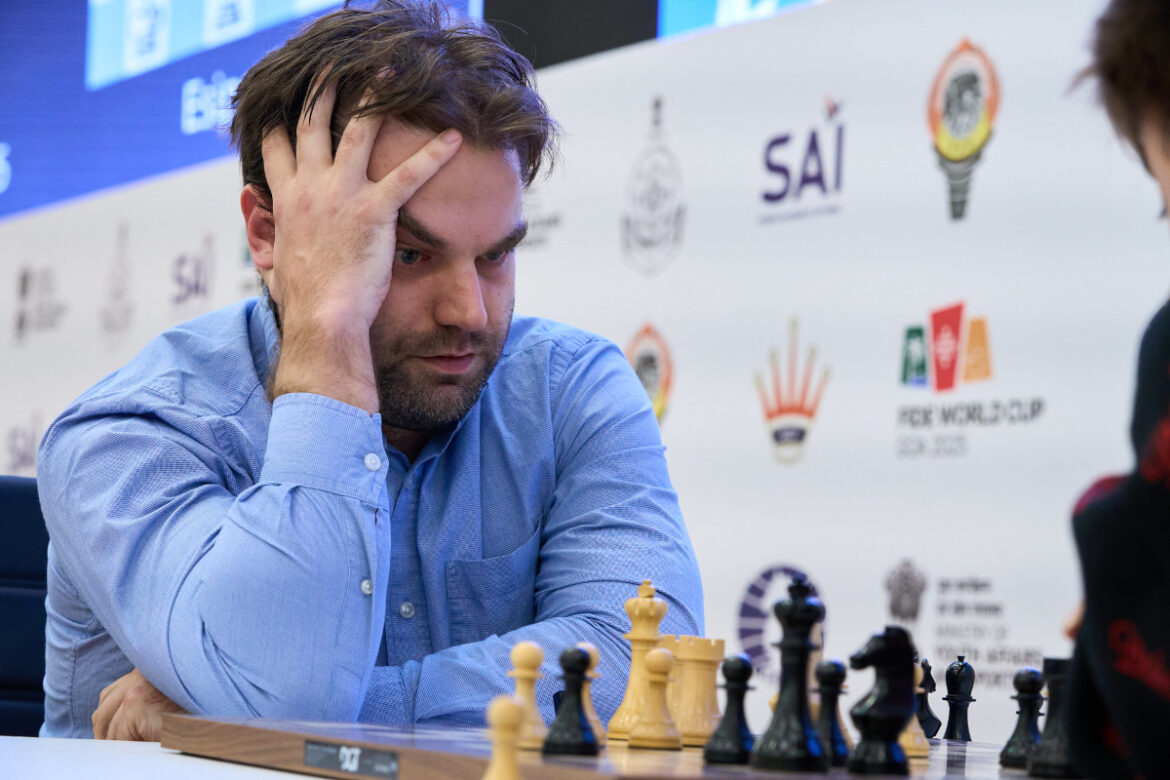On to the quarterfinals
Sixteen days have passed since the start of the event – including one rest day – and only eight participants remain in contention at the FIDE World Cup in Goa. Sunday’s round-of-16 tiebreaks completed the lineup for the decisive quarterfinals, which begin on Monday.
With three qualification spots for the 2026 Candidates Tournament at stake, the remaining contenders now stand within reach of the event’s most significant prize. Notably, none of the quarterfinalists has previously taken part in a Candidates Tournament, meaning that next year’s edition of the double round-robin in Cyprus will feature three debutants.
In today’s fast-paced chess world, especially online, where blitz and rapid games dominate, the traditional approach of grinding through lines of opening theory can feel overwhelming, and even unnecessary. The real challenge? Striking the right balance in your opening preparation. How deep should you go? Where do you stop? This course is built on the timeless wisdom of my legendary coach, Chebanenko, who designed opening repertoires for his “lazy” students – not lazy in attitude, but smart in approach. His philosophy? Don’t memorise. Understand.
Four of the eight round-of-16 matches had already been decided in the classical portion. Among the four that required tiebreaks, three ended in favour of the lower-rated player. The only result that could be considered a genuine upset was Alexander Donchenko’s win over Le Quang Liem, however. The victories by Jose Martinez and Sam Shankland, achieved against Pentala Harikrishna and Daniil Dubov respectively, were less surprising given the strong form both players have shown throughout the event and the relative closeness in rating.
The quarterfinal lineup highlights national diversity and generational breadth. Seven countries are represented, with Uzbekistan being the only nation to field two players: Javokhir Sindarov and Nodirbek Yakubboev. The age range spans from 19-year-old Sindarov to 34-year-old Shankland, with the remaining six players all in their twenties.
For Shankland, the last remaining US representative from an initial group of twelve, the quarterfinal takes on added personal significance. As he reflected after defeating Dubov, the 2021 World Cup quarterfinal remains the most painful loss of his career. At that time, he was eliminated by Sergey Karjakin, who won twice on demand before ultimately advancing to the semifinals. Speaking candidly, Shankland noted:
I will forget every single [loss] except for the 2021 quarterfinals. I will take that match to my grave, and this is my chance to exorcize some demons.

Shankland 3-1 Dubov
After surviving a tough position in the first classical game of the match and safely getting a draw with black in the second, Shankland won both 15+10 games in the tiebreakers to reach the quarterfinals. The first win, achieved with the white pieces, was the match’s turning point.
In this insightful video course, Grandmaster David Navara shares practical advice on when to calculate deeply in a position — and just as importantly, when not to.
Free sample video: Introduction
Free sample video: Invisible moves

Daniil Dubov | Photo: Eteri Kublashvili
Esipenko 2½-1½ Grebnev
Grebnev, aged 19, was the lowest-rated player still in contention. In the tiebreaks, Esipenko defeated the youngster’s Petroff Defence in the first rapid game.
If one skill decides more games, it’s calculation. Openings fade, plans change – but seeing clearly, comparing lines, and choosing with confidence wins points. In this course GM Ganguly turns calculation into a trainable skill with a structured path for any level. You won’t just solve tactics; you’ll learn how to think: where to start, which branches to explore, when to stop, and how to keep a crystal-clear mental board under pressure.
Free video sample: Introduction
Free video sample: Forcing moves

Aleksey Grebnev failed to score in the rapid-chess rematch | Photo: Eteri Kublashvili
Donchenko 4½-3½ Le
The longest match of the round-of-16 saw the contenders trading wins with black in the first two sets of the tiebreakers. In the 5+3 section, though, a 27-draw was followed by Donchenko’s deciding victory with the white pieces.

Alexander Donchenko | Photo: Eteri Kublashvili
Martinez 3½-2½ Harikrishna
Facing the experienced Harikrishna, Martinez showed stable, strong play throughout the match, scoring the only win of the confrontation in the first game with a 10+10 time control.
Picture this: you’ve outplayed your opponent move by move, you’re clearly better – and then the endgame slips into a draw, simply because you lacked the crucial theoretical knowledge. That is exactly where this course comes in. Without solid endgame skills, there’s no way forward. Rook endgames are most essential: they occur more often than any other type of endgame, and often make the difference between victory and half a point. If you master them, you’ll confidently convert your advantages into wins!
Free video sample: Introduction
Free video sample: Bodycheck

Charlize van Zyl interviewing Jose Martinez | Photo: Eteri Kublashvili
All games – Round 5
Replay games from all rounds at Live.ChessBase.com
EXPAND YOUR CHESS HORIZONS
Data, plans, practice – the new Opening Report In ChessBase there are always attempts to show the typical plans of an opening variation. In the age of engines, chess is much more concrete than previously thought. But amateurs in particular love openings with clear plans, see the London System. In ChessBase ’26, three functions deal with the display of plans. The new opening report examines which piece moves or pawn advances are significant for each important variation. In the reference search you can now see on the board where the pieces usually go. If you start the new Monte Carlo analysis, the board also shows the most common figure paths.
